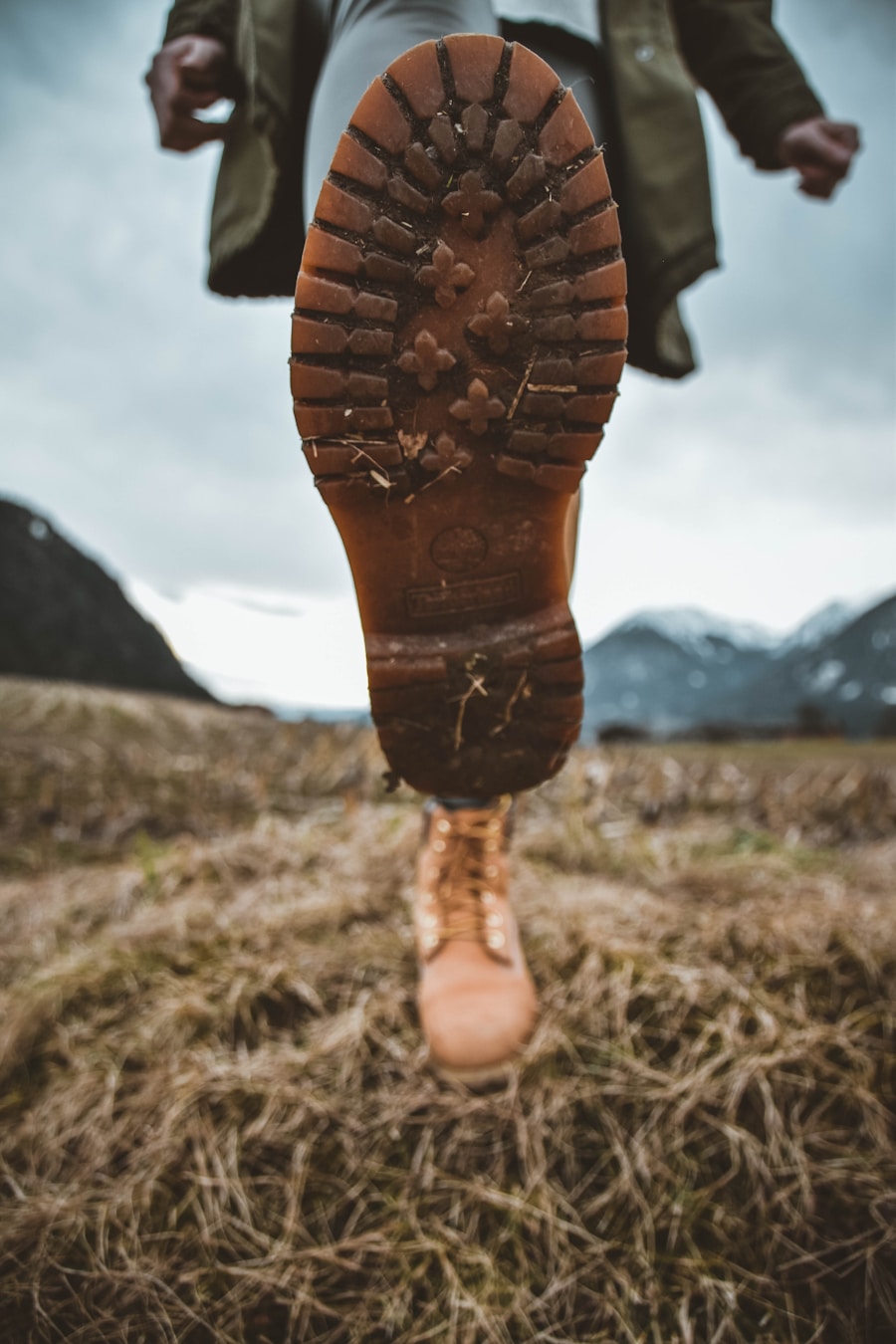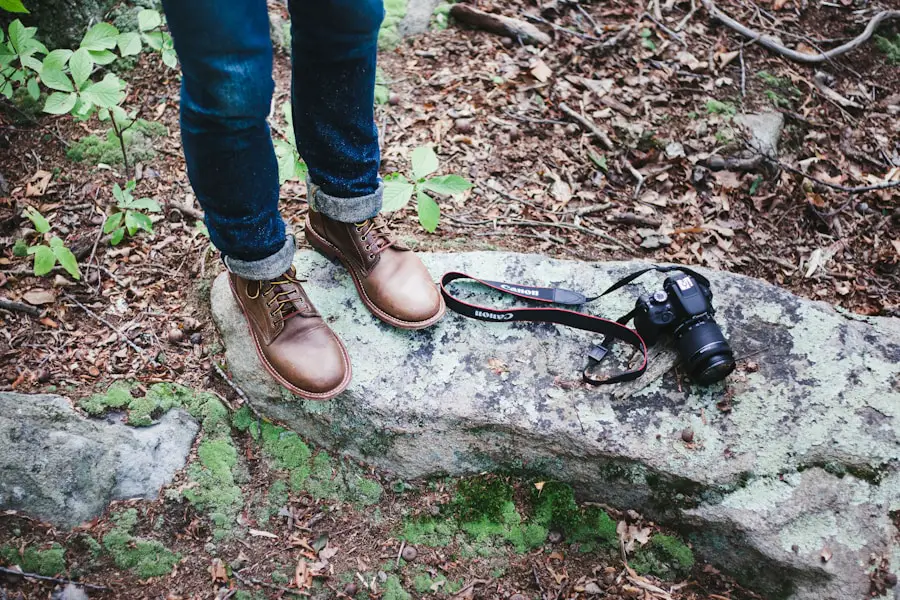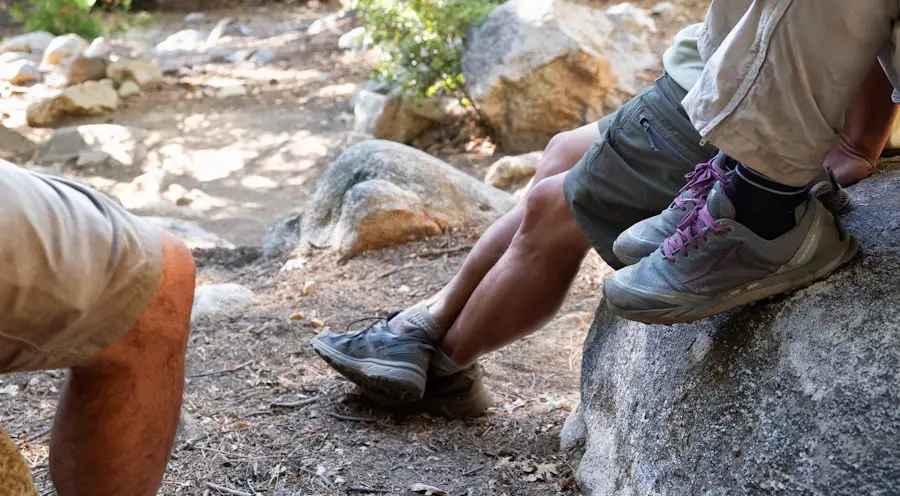Proper sizing in footwear, particularly in hiking boots, is paramount for both comfort and performance. The right fit can significantly enhance your hiking experience, allowing you to traverse various terrains without the distraction of discomfort or pain. Ill-fitting boots can lead to blisters, calluses, and even more severe injuries such as sprains or fractures.
When your feet are well-supported and properly encased, you can focus on the beauty of nature around you rather than the agony of your feet. Moreover, the importance of proper sizing extends beyond mere comfort; it also plays a crucial role in ensuring safety during outdoor activities. Hiking often involves navigating uneven surfaces, steep inclines, and unpredictable weather conditions.
A boot that fits well provides the necessary stability and support, reducing the risk of slips and falls. In contrast, a boot that is too loose may cause your foot to slide around inside, leading to a lack of control and potential accidents. Therefore, understanding the significance of proper sizing is essential for anyone looking to enjoy hiking to its fullest.
Key Takeaways
- Proper sizing is crucial for comfort, support, and injury prevention when hiking.
- Understanding foot anatomy is essential for selecting the right hiking boots.
- Measuring for the perfect fit involves considering both length and width of the foot.
- Trying on hiking boots is necessary to ensure the right fit and comfort.
- Different terrains may require different sizing considerations for hiking boots.
- Tips for ensuring the right fit include wearing the right socks and considering foot swelling.
- Common sizing mistakes to avoid include relying solely on shoe size and not considering foot shape.
- Seek professional help when experiencing persistent discomfort or difficulty finding the right fit.
Understanding Foot Anatomy
To appreciate the importance of proper sizing, one must first understand the anatomy of the foot. The human foot consists of 26 bones, 33 joints, and over 100 muscles, tendons, and ligaments. This intricate structure is designed to support weight, absorb shock, and provide balance.
The foot can be broadly divided into three sections: the forefoot, midfoot, and hindfoot. Each section plays a unique role in movement and stability. The forefoot includes the toes and the metatarsals, which bear much of the weight during walking and running.
The midfoot provides arch support, while the hindfoot consists of the heel and ankle, crucial for shock absorption. Understanding these anatomical features is vital when selecting hiking boots. For instance, individuals with high arches may require boots with additional arch support to prevent discomfort during long hikes.
Conversely, those with flat feet might benefit from a boot that offers stability and cushioning to accommodate their foot structure. Additionally, recognizing how different parts of the foot interact with various surfaces can inform choices about tread patterns and boot stiffness. A comprehensive understanding of foot anatomy allows hikers to make informed decisions about which boots will best suit their unique needs.
Measuring for the Perfect Fit

Measuring your feet accurately is a critical step in finding the perfect fit for hiking boots. Many people underestimate the importance of this process, often relying on their usual shoe size without considering that sizes can vary significantly between brands and styles. To measure your feet correctly, it is advisable to do so at the end of the day when your feet are at their largest due to swelling from daily activities.
Using a ruler or a Brannock device, measure both the length and width of your feet. It’s essential to note that most people have one foot larger than the other; therefore, always size for the larger foot. Once you have your measurements, consult the sizing charts provided by different manufacturers.
Each brand may have its own sizing standards, so it’s crucial to refer to their specific guidelines rather than relying solely on your typical shoe size. Additionally, consider factors such as sock thickness when measuring; thicker socks may require a slightly larger boot size for comfort. Taking these steps ensures that you are equipped with accurate information as you begin your search for the ideal hiking boot.
Trying on Hiking Boots
| Brand | Model | Size | Weight | Material |
|---|---|---|---|---|
| Merrell | Moab 2 | 10 | 2 lbs | Leather and mesh |
| Salomon | X Ultra 3 | 9.5 | 1.5 lbs | Synthetic |
| Columbia | Newton Ridge Plus II | 11 | 2.2 lbs | Leather and suede |
Trying on hiking boots is an essential part of the fitting process that should not be rushed. When you visit a store or shop online, it’s important to try on multiple pairs to find one that feels just right. Start by wearing the socks you plan to use while hiking; this will give you a more accurate sense of how the boots will fit during your outdoor adventures.
As you slip on each pair, pay attention to how they feel around your toes, arch, and heel. Your toes should have enough room to wiggle without feeling cramped, while your heel should fit snugly without slipping. Walk around in the boots for several minutes to assess comfort levels.
Pay attention to any pressure points or areas where the boot feels too tight or loose. It’s also beneficial to simulate hiking movements by walking up and down an incline if possible. This will help you gauge how well the boots perform under conditions similar to those you’ll encounter on actual hikes.
Remember that breaking in new boots is essential; however, they should still feel comfortable from the start without causing pain or discomfort.
Sizing Considerations for Different Terrains
Different terrains present unique challenges that can influence your choice of hiking boot size and style. For instance, if you plan to hike on rocky or uneven surfaces, you may want a boot with a stiffer sole for better support and protection against sharp rocks. In such cases, a snug fit is crucial to prevent your foot from sliding inside the boot during descents or ascents.
A well-fitted boot will help maintain stability and reduce fatigue over long distances. Conversely, if your hiking plans involve softer trails or wet conditions, you might prioritize breathability and flexibility in your footwear choice. In these scenarios, a slightly looser fit may be acceptable as it allows for better airflow and comfort during warmer weather hikes.
However, it’s essential to strike a balance; too much looseness can lead to blisters as your foot moves around inside the boot. Understanding how different terrains affect sizing considerations will help you select boots that not only fit well but also enhance your performance in various conditions.
Tips for Ensuring the Right Fit

Try Them On at the Right Time
Always try on boots at the end of the day when your feet are slightly swollen. This will give you a more accurate representation of how they will feel during extended wear. Additionally, wear the same type of socks you plan to use while hiking when trying on boots, as this can significantly affect how they fit.
The Thumb Test
Perform a “thumb test” to ensure a comfortable fit. After lacing up the boots securely, slide your foot forward until your toes touch the front of the boot. There should be about a thumb’s width of space between your longest toe and the end of the boot when standing upright. This space allows for movement during descents without risking toe jam or discomfort.
Test the Boots in Action
If possible, walk on different surfaces within the store to assess how well the boots grip and support your feet in real-world conditions. This will give you a better understanding of how the boots will perform on various terrain.
Common Sizing Mistakes to Avoid
When selecting hiking boots, several common sizing mistakes can lead to discomfort or even injury on the trail. One prevalent error is assuming that all brands fit true to size; this is not always the case as sizing can vary widely between manufacturers. Relying solely on your usual shoe size without trying on different brands can result in a poor fit that compromises both comfort and safety.
Another mistake is neglecting to account for foot swelling during hikes. Many hikers fail to consider that their feet will expand as they walk long distances or navigate challenging terrains. This oversight can lead to choosing boots that feel comfortable initially but become painfully tight after several hours on the trail.
Always remember to allow for some extra space in your boots to accommodate this natural swelling throughout your hike.
When to Seek Professional Help
While many hikers can find their ideal boot size through careful measurement and trying on various options, there are instances when seeking professional help becomes necessary. If you have specific foot conditions such as flat feet, high arches, or bunions, consulting with a podiatrist or a specialized footwear expert can provide valuable insights into which types of boots will best accommodate your needs. These professionals can recommend custom orthotics or specific brands known for catering to particular foot shapes.
Additionally, if you consistently experience discomfort or pain while hiking despite trying various sizes and styles of boots, it may be time to seek professional advice. A fitting specialist at an outdoor retailer can analyze your gait and foot structure to suggest appropriate footwear options tailored specifically for you. Taking these steps ensures that you invest in hiking boots that not only fit well but also support your overall foot health during outdoor adventures.
If you’re gearing up for a hiking adventure, it’s important to make sure you have the right footwear. One key aspect to consider is sizing your hiking boots properly. To help you with this, check out this informative article on
